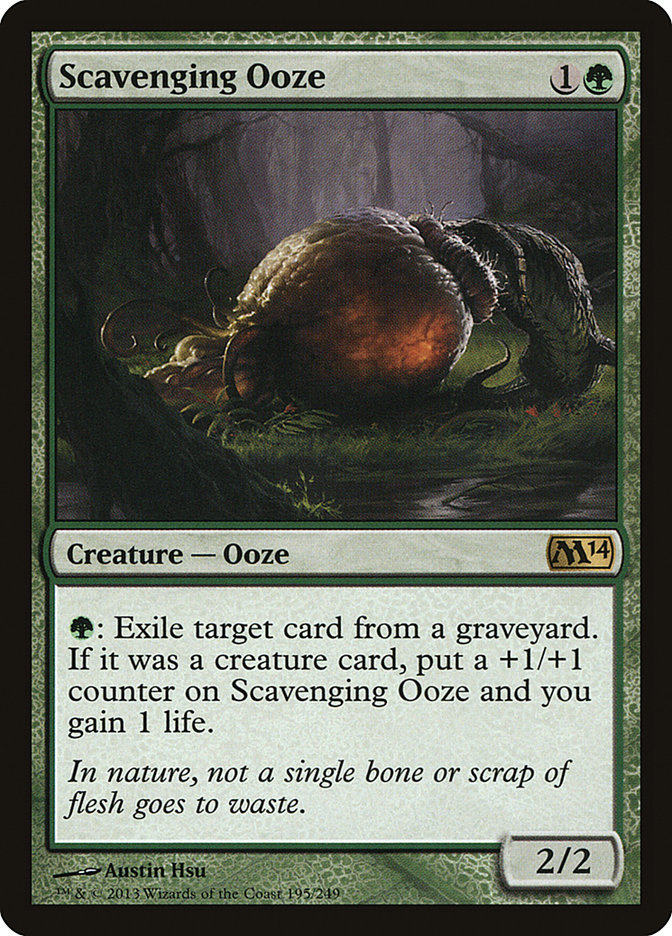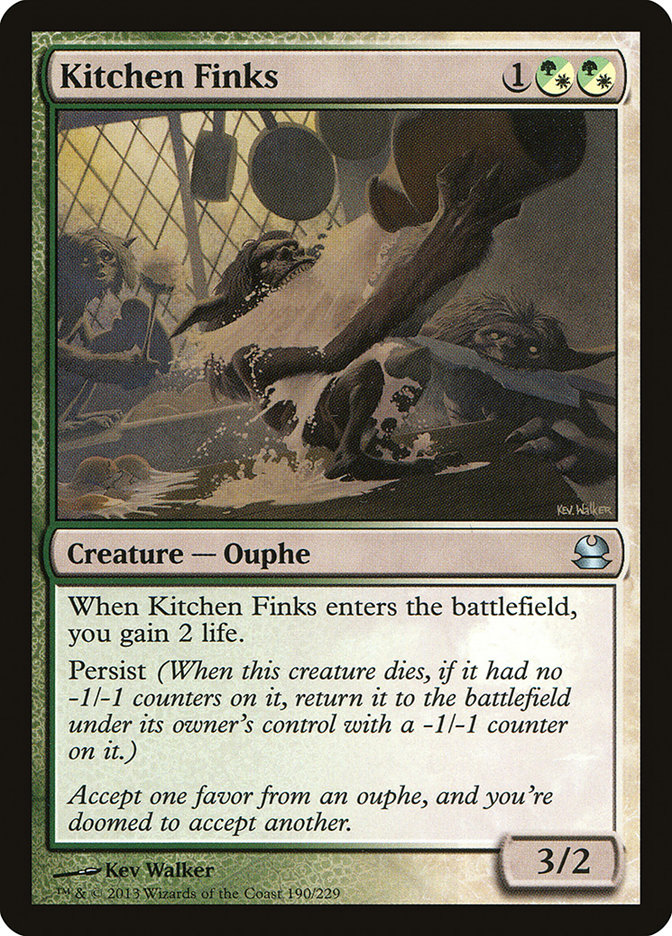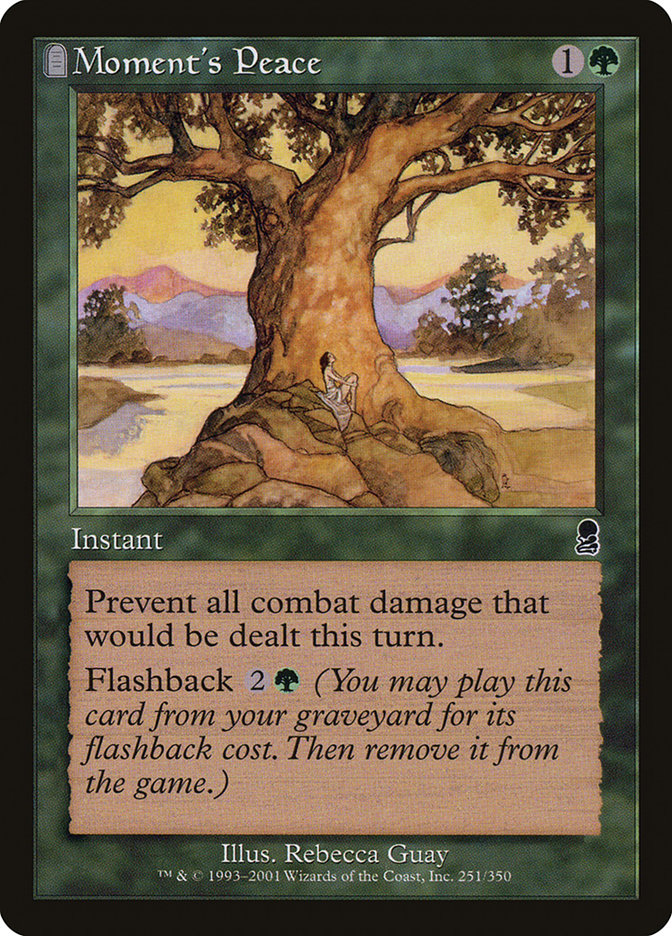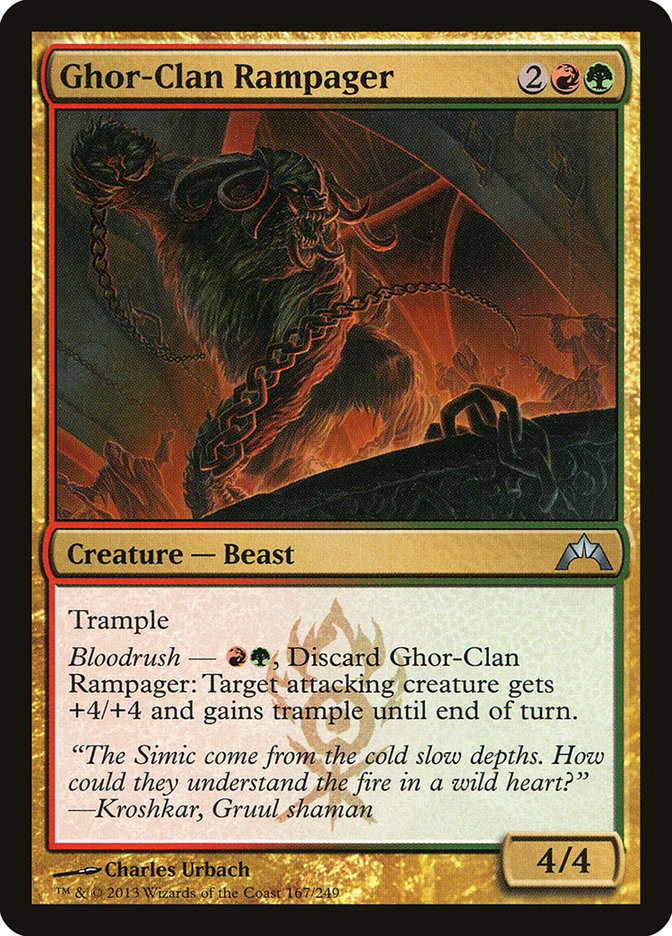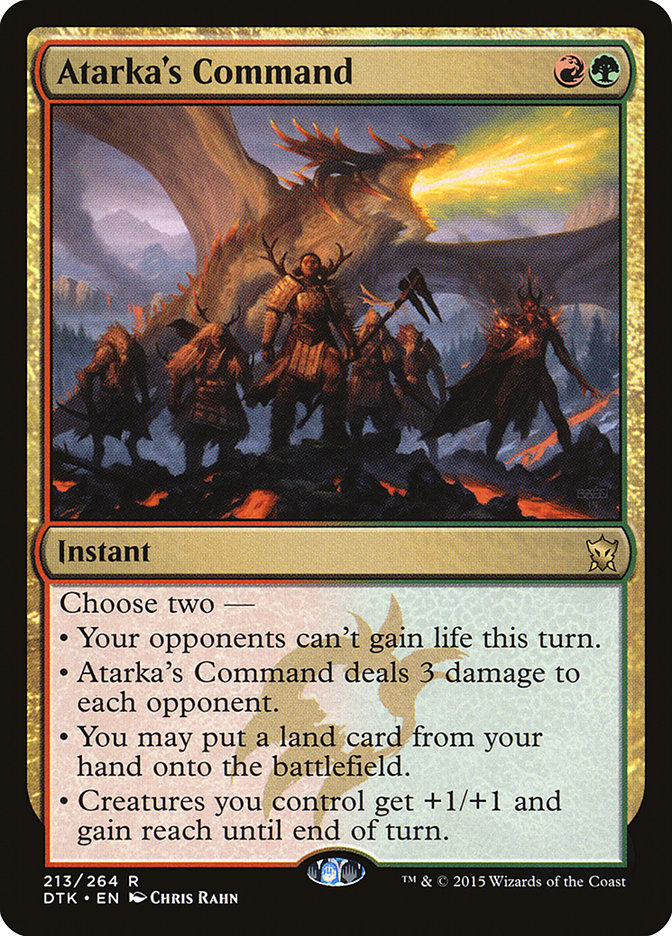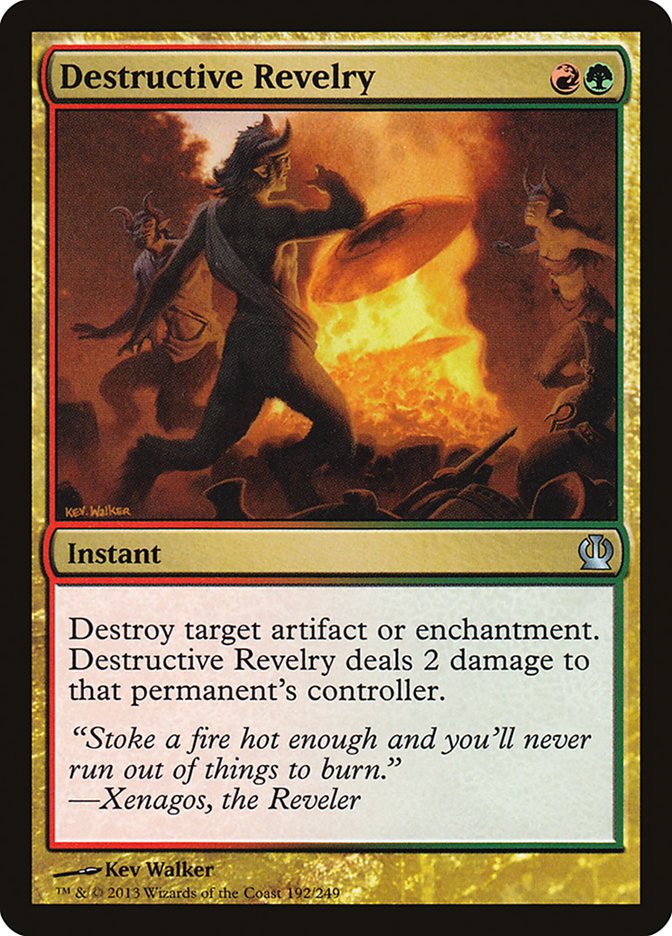I’ve played a lot of decks this last week. I’ve played G/R Eldrazi. I’ve played Bant Humans. I’ve played Lantern Control. I’ve played Mardu Nahiri. I’ve played Jeskai Control. I’ve played my own Blue Moon brew. I’ve played W/R Prison (in many varieties). I’ve played a few more decks, as well.
And I’ve played Burn.
Burn is always one of those decks I come around to at some point during my exploration of any Modern format. This is for a lot of reasons.
1. Burn Is Unfair
When you’re playing Burn, you’re competing on an axis that is very, very specific. Your opponent’s life total is likely to be going into a freefall, and if they aren’t ready for that exact, specific possibility, they will most likely die.
This doesn’t mean that they get to get away with non-dedicated solutions as their primary means to keep on living. Burn requires specific, hefty solutions. If an opponent thinks they’ll make it because they have Scavenging Ooze maindeck and they’ll “make do” by sideboarding in Kitchen Finks or Thragtusk because it has more applications elsewhere, they will get wrecked.
A big part of it is that Burn’s fundamental approach puts the game under duress so quickly that simple things like playing one’s land properly become a challenge, and little bursts of lifegain simply won’t do when Atarka’s Command and Skullcrack might come to the party.
Many people I respect have long said that Modern is about doing something unfair that people aren’t ready for. Burn is unfair.
2. People Are Bad at Burn
This is huge.
Typically, when people are playtesting, this phenomenon will occur: someone will suggest that they need to test against Deck X, and someone will proxy it up, and do their best. Deck X, whatever it is, will be played by someone without all that much experience. If it’s a deck that threatens a player’s life total, in larger groups of playtesting, often that deck is handed to a less experienced player because such decks are “easier” than control decks.
This generally means that the Burn pilot, in playtesting, isn’t playing it well.
When I say Burn is hard, what I mean is that the margins of victory can be so small that sequencing your decisions incorrectly will mean that you might get 21 damage on turn 4 and 23 damage on turn 5, when you needed to get seventeen damage on turn 4 to get 25 damage on turn 5 – and the decision tree that led to that branching might have started on turn 1 or 2.
This means something very, very important: a huge portion of the player base simply hasn’t played against someone who really, really knows how to pilot Burn. This means that they are very likely to underestimate how dangerous the deck is. This will affect not only their sideboarding decisions, but also their choice on whether or not to play that Hallowed Fountain tapped or untapped – a decision that could be match-deciding.
When you’re not used to Burn being piloted at a high level, the decisions you make in playing against it can end up influencing choices that end up playing out like a reverse of the Burn decision tree: you’re making a plan based on the path you’re used to seeing from Burn simply because you’re not experienced seeing those other paths.
While Ross Meriam is probably sick of this clip being referenced, it’s still a noteworthy one to bring up:
The full match takes about 30 minutes, and is well worth the watch. Ross’s choices in the match aren’t problematic – just because he could have won the game doesn’t mean he didn’t have good reason for his final play of the game, activating Qasali Pridemage. This play stops several potential kills from Patrick, even if it did open him up to the kill Patrick did have.
What’s more important to realize are the things we can’t see. Did Merriam choose one less card in his sideboard that might have helped the matchup because he determined that he had sufficient space dedicated to it, given the slice of the metagame that it takes up and his perceived percentages?
When a player isn’t hungrily seeking out the win with their deck, the way Patrick does in that final game, they will win less, and that slip in results that a ton of players experience first-hand imparts this factor to many, many potential opponents:
They underestimate what they need to do to beat Burn.
This simple fact plays out again and again every time I play Burn. And it is one of the reasons that I often come back to the deck.
3. Burn Matchups (Often) End Quickly
At a Grand Prix, there are nine rounds in Day 1 and six rounds in Day 2. When you’re in the second day of an event, even if there are fewer rounds, you tend to simply be more worn down by the previous day.
One of the many decks I’m thinking about for Grand Prix Indianapolis is Blue Moon. When I think about running through an entirety of a Grand Prix with all of the long games I can expect with Blue Moon, it is simply exhausting. While I certainly don’t think of Burn as an “easier” deck, I do love the simple reward of fast-finishing matches.
It’s great to be done with a match of Magic and have time to decompress. This can mean the difference of a calming walk after a bad loss, time for a cup of coffee or a sandwich, or just getting to sit down and laugh with friends. It might not sound like much, but round after round, these little breathers really add up.
All of this ends up adding up to an intangible extra sliver of percentages tacked on to your odds to win any given round. If, on paper, you’re choosing between two decks with roughly similar payoffs, that sliver can be the extra push to make a call between one and the other.
Deck #1: Ghor-Clan Rampager Burn
Sometimes I explore an idea to see what I can come to by pushing that concept. In this case, way back when Ghor-Clan Rampager was printed, it was trying it out in Burn. When you’re running Ghor-Clan Rampager, certain card choices start looking incredibly more intriguing. You end up looking at a card like Keldon Marauders and seeing nine damage, which is a great rate for two cards.
This deck has largely stayed the same ever since I built it. While Monastery Swiftspear snuck in for a while, the grim reality became the obvious problem of not enough spells to make Swiftspear work properly! Ultimately, the Ghor-build settled into this list, slightly shifting it over time only a little. This is not a typical Burn list by any means, but I’m still happy with it.
Creatures (21)
- 1 Grim Lavamancer
- 4 Keldon Marauders
- 4 Goblin Guide
- 4 Vexing Devil
- 4 Ghor-Clan Rampager
- 4 Eidolon of the Great Revel
Lands (20)
Spells (19)

One of my favorite aspects of the deck is the ability of the deck to just dole out a huge amount of damage, regardless of the lifegain that the opponent has put out. In Game 1, most decks are simply not packing enough lifegain for it to matter in comparison to the amount of damage that happens because of Ghor-Clan Rampager.
After sideboarding, you actually can end up turning from a classic-style Burn deck into an almost “semi-Big Red” kind of deck, with Boros Reckoner just being amazing at all manner of things, from holding off a non-flying creature to comboing absurdly on the attack with any number of tricks.
Ultimately, I think this version of the Burn deck is slightly worse than a more traditional build, but this take really shines in the mirror and versus decks where you’re actually engaging in true goldfish-like behavior, because it tends to be ever-so-slightly faster if you and the opponent are simply ignoring each other.
On the other hand, sometimes you just want to keep it simple rather than be fancy.
Deck #2: Barely Boros Burn
Creatures (15)
Lands (20)
Spells (25)

This deck doesn’t intentionally have so much white in the sideboard that it could be mistaken for a base-white deck, but that’s kinda how it ended up. In large part, that’s why you see the presence of a Clifftop Retreat and four Sacred Foundry.
Much of this deck is fairly straightforward and traditional in most Burn lists, excepting the fact that you don’t see any green in here. This loses two important cards from those lists:
To me, Destructive Revelry is the real loss. What you get to make up for it, however, is less pain from your own lands and a plan which includes a reasonable amount of lifegain for other aggressive matchups. Losing Atarka’s Command does occasionally mean a little less damage, but in the chunks this deck hits for, versus Affinity, Death’s Shadow, opposing Burn, and any other aggressive deck that specializes in damage-dealing, those extra points for you often translate into an extra draw step, which ends up being extra damage to them.
Still, you need a replacement for the loss of Destructive Revelry, and this deck stitches together a few options in the form of Stony Silence and Smash to Smithereens. Of course, in practice, I found myself needing something for cards like Leyline of Sanctity and yet not wanting a pure Disenchant. War Priest of Thune neatly solved the problem while still being a creature that could be counted on. I’ve sometimes toyed with Leonin Relic-Warder, but every time I try it out, it feels too fragile to be a choice that could be counted on.
If you don’t enjoy the pain required to play both Atarka’s Command and Boros Charm, this is the deck for you.
Deck #3: PSully’s Burn
I’ve saved the best for last.
Patrick Sullivan is on my short list of people whose opinions on red that I listen to, and for good reason. I wasn’t surprised to discover that Mike Flores’s most recent tournament win came from piloting a PSully list.
@fivewithflores Glad I could be of service.
— Patrick Sullivan (@BasicMountain) August 7, 2016
Mike is my former teammate on Team Mad Apple and my former colleague here on StarCityGames.com as well as the Dojo (for you Magic dinosaurs out there). Mike isn’t exactly known for picking up a Burn deck, so it is noteworthy for him to win an event with Burn, even if it is a small one. After all, remember Mike’s most recent qualification for the Pro Tour came on the back of playing a five-color Dragon control deck.
Here is the version of Burn he played:
Creatures (14)
Lands (20)
Spells (26)
- 4 Lightning Bolt
- 4 Lava Spike
- 2 Lightning Helix
- 4 Rift Bolt
- 4 Searing Blaze
- 4 Boros Charm
- 4 Atarka's Command
Sideboard

This build is epically straightforward. It runs the “correct” number of @BasicMountains and other Mountains (by which I mean the number that Patrick and I both run in our decks), a maximum of fetchlands to make Searing Blaze and Grim Lavamancer as effective as possible, and a selection of nearly all four-ofs that round things out. The two Lightning Helix are in my mind essentially the “flex” slot which could be any number of other cards, with Skullcrack being the most likely selection.
The sideboard has a healthy appreciation for Affinity and chooses to answer the new hotness, Death’s Shadow, with a card like Deflecting Palm as well as a simple card like Path to Exile.
What I love about this build of the deck is that it isn’t trying to get any edges on the opponent by dragging it kicking and screaming out of cards (a weakness and erstwhile strength to some of my builds), and as a result it simply is consistent at getting a singular job done: killing you.
One thing that is tricky about Burn decks that ends up deceiving many people is that there are many games that a Burn deck simply cannot win. This factor to Burn leads to a case of the tricksy “feel-bads,” which sometimes chase people away from choosing the deck. Decks like Patrick’s build are certainly more prone to that game, but their overall match win percentages still shine despite those can’t-win games because they have so many reliable wins to offset them.
Nothing wrong with choosing a PSully Burn deck. If you’re looking for cards to tweak, look to those two copies of Lightning Helix in the main. In the sideboard, probably up to 2 Deflecting Palm, 2 Destructive Revelry, 2 Lightning Helix, 2 Searing Blood, and 1 Skullcrack could get cut for cards you prefer, if you can manage to convince yourself your read on the metagame justifies changing the choices PSully made.
But probably don’t change a card.
Grand Prix Indianapolis
My final deck choice probably won’t be wrapped up until the time you read this. I love Burn right now, and I think that it is a good deck, overall, for Modern, and I especially like it right now if you’re looking at a potential world of people throwing their life away.
Whether you’re going to Indy or headed to an upcoming SCG Tour® event near you, if you haven’t started putting in your reps with Burn, make sure you do so for the future. Burn seems to be a perennial deck in Modern, and the format very much rewards you for understanding your role in a matchup and knowing the intricacies of it, particularly when it comes to sideboarding. Not every tournament is the right tournament to play Burn, but there have been many tournaments where not only do I regret not playing Burn, but I regret not urging every single one of my friends to do so.
This might be one of those moments. I’m still not sure if it is, but if you lurk in the Leagues, it’s a fair bet that you might have played against me, dropping a GG on turn 1 and hoping that it is a good game, well, at least for me.


